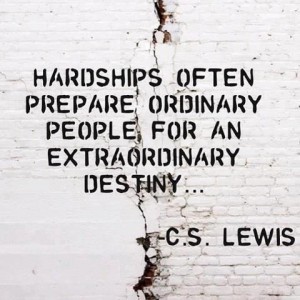
Growth while moving through
the process of hardship.
- There is a new nurse on our
ward who isn’t grasping things as easily as most of us. He becomes overwhelmed and anxious very
easily. Many of us coddled him and
“protected” him for so long. One
day he had a breakdown and declared to all of us that he felt “unsafe.” I had to be the one to inform our boss
because when we have people’s lives in our hands – one cannot feel
“unsafe.” Maybe if we didn’t try
to protect him so much, maybe if he stayed on orientation a little
longer, maybe if we tried to help him in other ways this wouldn’t have
happened. He went back on orientation for a couple months and just started back on the ward working independently. It's helped him immensely.
Learning from our mistakes
I learn the MOST from my mistakes. I’ve made a medication error (nothing
terrible, Claritin was given at the wrong time) but I had to put in a Patient
Safety Report (PSR) which is a non-punitive way of trying to make sure that
mistake doesn’t happen again. That would
have been considered a “sloppy mistake (which) happen(s)
when we're doing something we already know how to do, but we do it incorrectly
because we lose concentration” (Briceño,
2015). Since then, I’ve double and tripled checked my
medication before giving them. When I
told my boss about it, I felt terrible, but he told me not to beat myself up
over it and to learn and grow from this.
Mandatory error reporting requirements.
- At my facility, we have a Patient Safety Reporting (PSR) system. Like I said above, it’s a non-punitive, anonymous, reporting system. Near misses, medication errors and anything that could harm a patient is supposed to be reported. It’s to bring light to situations that could have been prevented and to try to find a way to correct it so it doesn’t happen again. Our text book talks about public error reporting which “care providers may be unwilling to declare their errors, particularly minor one” out of fear that they’ll get in trouble (Porter-O’Grady & Malloch, 2015, p. 358).

Leadership and conflict
- My current leaders are
amazing. If there is a problem
they don’t play sides and they talk like they’re on the same level as
you. They don’t act as if they’re
above you. I’ve had other
leadership talk to me like a child, like they’re better than me, by demeaning myself and others. Just like I learn
the most from my mistakes, I learn the most from poor leadership – how
NOT to act. I want to incorporate the
SWOT approach that Nate Guyton wrote about in American Nurses Today journal. SWOT stands for strengths, weaknesses,
opportunities, and threats. “Provide
employees with a copy of the SWOT document you complete when conducting
their 3-month 1:1 meeting; be sure to write specific goals and dates for
when they must be accomplished” (2012).
Gawande “how
do we heal medicine/healthcare.”
- It’s amazing how expensive our
healthcare has become. I don’t
notice it because I’m active duty so my family and I don’t have to worry
about medical bills. But I hear it
from my family and friends how terrible their medical bills have
become. I agree with Gawande about
us all being “pit crews” with our check lists. If there is a check list, then
important things are less likely to get lost or overlooked (Gawande,
2012).

Value in
healthcare services
- We need to start “blending the cultures of finance and health care…it can be made somewhat manageable if everyone understands the common ground shared by finance and health professionals” (Porter-O’Grady & Malloch, 2015, p. 367). If I were to measure the value of healthcare services it would be patient safety and if patients were leaving the hospital in better condition than when they entered the hospital.
‘Sharp end/blunt end’ theoretical approach in healthcare
organizations
- We have that kind of hierarchy of “sharp end/blunt end” in the military. I haven’t noticed them interfering with our patient care but they will interfere with the military staff. Some days we must come in at 0600 instead of 0645 so we can attend military training. That means we’re up earlier and at the hospital longer leaving staff exhausted.

Stacking/peeking/prioritizing
- I as a novice nurse I usually
write down what needs to be done at what times so I don’t miss a
medication, vital signs or pain reassessments. When something comes up and creates
waves I pause and think. I ask
questions. When I finally stop
asking questions is when I’ll be able to say, “OK, I got this.” I never
heard of “stacking” but cannot wait to try it the next time I work. Pat Ebright talks about how every
nurse stacks; they make a list of priorities and when something else
comes up we restack (2010).

Reducing continuous interruptions
- One way to limit interruptions
is having “No Interruption Zone” by the medication carts. I’ve also seen signs that nurses wear
around their necks when they're in the middle of administering medication this way no one interrupts them from point A, the med cart, to point B, the patient. There are many interruptions at my work. The other day
a corpsman was talking to me while I was removing medications and I
reminded him that I was removing medications and he was distracting
me. He left so I could
concentrate.
Just Culture
- Sidney’s Dekker said that "even the smallest cause can create the biggest effect" which resonates with me (2013). Just because we do something that seems small it could make a huge difference. We have bulletin boards at work and they were filled with information for us, the staff. I changed all of them so they'd display patient education such as: smoking cessation, diabetes, heart health, healthy foods, mammograms and so on. I didn't think it was that big of a change but my boss said that many people, whether they're patients or hospital workers, stop to read those boards.
- Sidney also talked about accountability. Normally if an error occurs we want to hold those people accountable, it's a natural feeling. He talks about how "we need to keep accountability and education together to try and solve the gap in the system rather than place blame on someone" (Dekker, 2013).
Staffing levels
This is interesting; because I'm in the military it usually takes a long time to get more staffing. I'm not even sure how the process works but I know it's a long process of the big bosses talking to Navy manpower to try and get more billets where they're needed. We can't even hire civilian nurses right now because our president put a hiring freeze in effect. We are fat staffed right now but before I got there they were very understaffed and the Department Head was working the floor almost every day.


References
Briceño, E. (2015).
Mistakes Are Not All Created Equal. Retrieved March 26, 2017, from
http://blog.mindsetworks.com/blog-page/home-blogs/entry/mistakes-are-not-all-created-equal
Dekker, S. (2013, May
29). Just Culture. Retrieved March 27, 2017, from
https://www.youtube.com/watch?v=gKqYMpWZbV8
Ebright, P. (2010,
January 29). Retrieved March 27, 2017, from https://www.youtube.com/watch?v=IVHbty3iI9k
Gawande, A. (2012,
March). Retrieved March 27, 2017, from https://www.ted.com/talks/atul_gawande_how_do_we_heal_medicine
Guyton,
N. (2012). Nine principles of successful nursing leadership. American
Nurse Today, 7(8), 2p.
Porter-O'Grady,
T. & Malloch, K. (2015). Quantum leadership: Building better partnerships
for sustainable health (4th ed.).
No comments:
Post a Comment